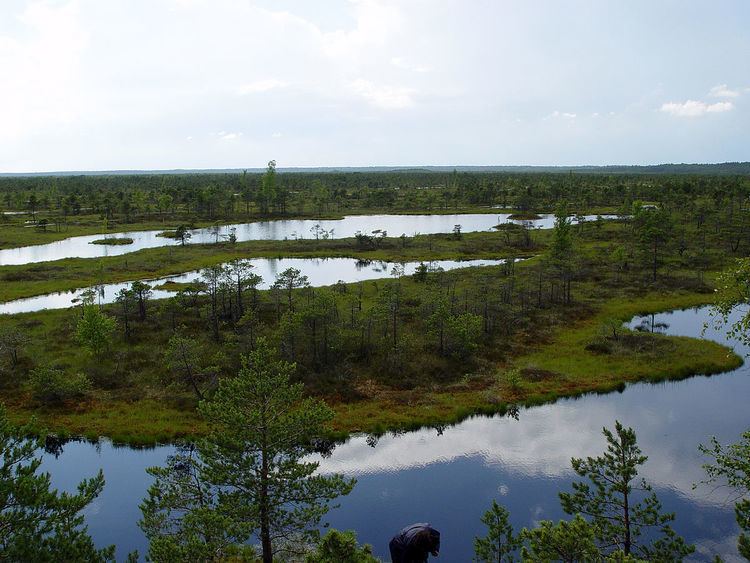 | ||
Similar Resort ‑ Rehabilit Center Ja, Kemeri National Park Fund, Sv apustulu Petera un, Dabas aizsardzi parvalde Profiles | ||
Morning in moorland emeri national park
Ķemeri National Park (Latvian: Ķemeru nacionālais parks) is a national park west of the city of Jūrmala, Latvia. Established in 1997, Ķemeri is the third largest national park in the country by area, covering an area of 381.65 km². The territory of the park is mostly occupied by forests and mires, the most significant of them being The Great Ķemeri Bog (Latvian: Lielais Ķemeru tīrelis). There are also several lakes, that are former lagoons of the Littorina Sea. Lake Kaņieris is a Ramsar site. The park also protects the famous natural mineral-springs and muds, used for centuries because of their therapeutic nature. The springs led to development of many resorts, spas, and sanitariums in the 19th century.
Contents
emeri national park
EcosystemEdit
Forests occupy 57% of the total area of the park. Fragmented mosaic distribution of the forests is not typical for the territory, forests are relatively evenly distributed in the whole area of the national park with some inclusion of meadows and areas not covered in forest. Bogs occupy 24% of the total area of Ķemeri National Park . All three wetland types are found here – fens, transition and raised bogs. Lielais Ķemeru tīrelis bog is an internationally important wetland. Many species of plants thrive in the bog, especially mosses and orchids. Meadows – both dry and wet – occupy 6% of the territory. Water in the form of lakes, rivers, sulphur springs and sea occupy 10% of the park's territory. Many of the outflowing streams have been altered over history to drain the marshland for agriculture, however the waters still support a wide variety of rare species, such as native snails and mussels, fishers, storks and otters.
Sulfur SpringsEdit
Ķemeri National Park has many natural sulfur springs, due to its sublayer of gypsum and soil bacteria, forming H2S gas which easily dissolves in the water. The therapeutic mineral waters and muds found in Ķemeri are used in health resorts located in Ķemeri town nearby.
